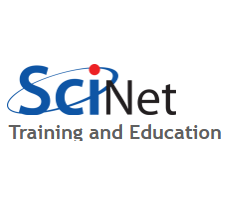| How To Successfully Teach Computing Disciplines To The Uninitiated |
| Written by Nikos Vaggalis | |||
| Monday, 18 February 2019 | |||
Page 2 of 2
The lectures are always recorded, while the recordings along with their related material such as slides and assignments are posted on the course's website, therefore accessible from anywhere and by anyone. Also note that past course recordings are not removed. This gives students the freedom to access the lecture's material even if they were not present in person, or even in the case that they need to review and revisit some of the topics covered. In some hot lectures, live streaming and live chatting for asking questions posted over the Internet is also offered. If that wasn't enough, there's still the weekly office hours where students receive face to face assistance on their assignments or on topics covered in the class. On the topic of assignments, they are preferred over mid-terms and/or finals because : we think that having almost one assignment per topic covered offers us the possibility of evaluating with much more fine granularity the knowledge gained by the students. It also offers the students the opportunity to practice the concepts discussed in class Something for the rest to ponder upon... And what about Gamification ? Well it's incorporated too! Usually we like to set up the assignments with a sort of “hidden message”, a learning opportunity, something the students can discover by themselves by following specifc guidelines and clues that we leave for them. In this case we believe this self-discovery process is much richer than the knowledge one can transfer in any sort of direct or explicit message delivered in lectures Finally, web based quizzes are also employed for immediate feedback. But how do they measure the course's success? Because the course's evaluation says so, based on anonymous feedback questionnaires, the raised level of participation, students' testimonials, the remarkable interest in becoming TAs, and because 97% of the students' graduated with an “A”. At the end of the day, it certainly is a course well thought through and I hope that its underlying principles presented in the paper will be followed by others in the construction of post modern classes. In these times when brick and mortar institutions are strongly challenged by bootcamps, MOOCs and other alternative sources of education, initiatives like this might just get them back at the top of the league. More Information Bridging the Educational Gap between Emerging and Established Scientific Computing Disciplines SciNet - Training and Education Related ArticlesUdacity Kotlin BootCamp for Programmers Insider's Guide To Udacity Android Developer Nanodegree Artificial Intelligence Engineer Nanodegree From Udacity FreeCodeCamp - Not Just A Bootcamp C# on edX - A Programmer's Review
To be informed about new articles on I Programmer, sign up for our weekly newsletter, subscribe to the RSS feed and follow us on Twitter, Facebook or Linkedin.
Comments
or email your comment to: comments@i-programmer.info |
|||
| Last Updated ( Monday, 18 February 2019 ) |


